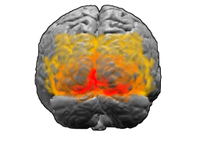
Reversal of spontaneous nystagmus during visual fixation in dorsal medullary infarction
Sign Up to like & getrecommendations! Published in 2020 at "Journal of Neurology"
DOI: 10.1007/s00415-020-09754-y
Abstract: Spontaneous nystagmus (SN) in dorsal medullary infarction is usually horizontal or mixed horizontal-torsional with a small vertical component [1]. The slow phases of SN may be directed toward or away from the side of the… read more here.
Keywords: visual fixation; fixation; medullary infarction; component ... See more keywords

Risk factors for medullary infarction after endovascular trapping of vertebral artery dissecting aneurysms
Sign Up to like & getrecommendations! Published in 2020 at "Neurosurgical Review"
DOI: 10.1007/s10143-020-01424-x
Abstract: Internal trapping (IT) is a treatment option for intracranial vertebral artery dissecting aneurysms (VADAs). Medullary infarction (MI) is a complication linked to this treatment. This study aims to clarify the outcomes of IT for VADAs… read more here.
Keywords: risk; medullary infarction; risk factors; dissecting aneurysms ... See more keywords

Isolated body lateropulsion caused by lower lateral medullary infarction
Sign Up to like & getrecommendations! Published in 2017 at "eNeurologicalSci"
DOI: 10.1016/j.ensci.2017.03.004
Abstract: http://dx.doi.org/10.1016/j.ensci.2017.03.004 2405-6502/© 2017 The Authors. Published by Elsevier B.V. This is an open access article under ipsilateral body lateropulsion as an initial symptom of lower lateral medullary infarction and review the existing literature regarding isolated… read more here.
Keywords: body lateropulsion; medullary infarction; lateral medullary;

0904 Exaggerated hypoxia burden of sleep apnea in patients with hyperacute lateral medullary infarction
Sign Up to like & getrecommendations! Published in 2023 at "SLEEP"
DOI: 10.1093/sleep/zsad077.0904
Abstract: Acute lateral medullary infarction (LMI) can sometimes appear with respiratory failure in the acute stage. Polysomnographic investigations have shown a specific association between LMI and sleep apnea syndrome. The aim of our study was to… read more here.
Keywords: medullary infarction; index; lateral medullary; sleep apnea ... See more keywords

Network Localization of Central Hypoventilation Syndrome in Lateral Medullary Infarction
Sign Up to like & getrecommendations! Published in 2020 at "Journal of Neuroimaging"
DOI: 10.1111/jon.12765
Abstract: The brainstem plays a key role in the control of respiration. Strokes involving the lateral medulla can rarely produce a central hypoventilation syndrome (CHS) characterized by loss of automatic respiration called Ondine's curse. In this… read more here.
Keywords: central hypoventilation; lateral medullary; medullary infarction; hypoventilation syndrome ... See more keywords

Clinical and radiological features of medullary infarction caused by spontaneous vertebral artery dissection
Sign Up to like & getrecommendations! Published in 2022 at "Stroke and Vascular Neurology"
DOI: 10.1136/svn-2021-001180
Abstract: Background and purpose Medullary infarction (MI) caused by spontaneous vertebral artery dissection (sVAD) is an important type of stroke. It is important to distinguish sVAD from other causes of stroke since the treatment strategies and… read more here.
Keywords: medullary infarction; infarction caused; caused spontaneous; svad ... See more keywords

Lateral Medullary Infarction with or without Extra-Lateral Medullary Lesions: What Is the Difference?
Sign Up to like & getrecommendations! Published in 2018 at "Cerebrovascular Diseases"
DOI: 10.1159/000487672
Abstract: Background: Lateral medullary infarction (LMI) is not an uncommon disease. Although lesions are usually restricted to the lateral medullary area, some patients have additional infarcts in other parts of the brain. The clinical features and… read more here.
Keywords: medullary infarction; lmipr lmipl; functional outcome; lateral medullary ... See more keywords

Fabry disease presenting as bilateral medial medullary infarction with a “heart appearance” sign: a case report
Sign Up to like & getrecommendations! Published in 2020 at "BMC Neurology"
DOI: 10.1186/s12883-020-01766-5
Abstract: Background The etiologic determinants of cryptogenic stroke remain a diagnostic challenge in clinical practice. Fabry disease (FD) is one of the monogenic causes of stroke that may remain unrecognized as a potential contributing causative factor,… read more here.
Keywords: medullary infarction; medial medullary; case; infarction ... See more keywords

Dorsolateral medullary infarction registry: a study protocol for a prospective, multicentric registry
Sign Up to like & getrecommendations! Published in 2021 at "BMC Neurology"
DOI: 10.1186/s12883-020-02030-6
Abstract: Background Dorsolateral medullary infarction is a typical cerebral infarction which is characterized by Wallenberg’s syndrome. Neurotrophic keratopathy is an uncommon consequence of dorsolateral medullary infarction. At present, the protocol is aimed to study the dynamic… read more here.
Keywords: neurology; medullary infarction; study; dorsolateral medullary ... See more keywords

Perioperative Bilateral Medial Medullary Infarction With “Snake Eyes Appearance”: A Case Report
Sign Up to like & getrecommendations! Published in 2021 at "Frontiers in Medicine"
DOI: 10.3389/fmed.2021.559381
Abstract: Perioperative bilateral medial medullary infarction (BMMI) cases mimicking acute motor axonal neuropathy (AMAN) under general anesthesia have not been reported. We describe a patient who suffered flaccid quadriplegia and could not wean from mechanical ventilation… read more here.
Keywords: medullary infarction; medial medullary; eyes appearance; perioperative bilateral ... See more keywords

CLINICAL AND IMAGING FEATURES OF MEDIAL MEDULLARY INFARCTION: RESULTS OF A PROSPECTIVE HOSPITAL-BASED COHORT STUDY ILLUSTRATED WITH A CASE REPORT IN A WHITE EUROPEAN ADULT.
Sign Up to like & getrecommendations! Published in 2022 at "Wiadomosci lekarskie"
DOI: 10.36740/wlek202210120
Abstract: OBJECTIVE The aim: This study aims in a prospective hospital-based cohort study to determine clinical and imaging features of medial medullary infarction and report a relevant clinical case in a white European adult. PATIENTS AND… read more here.
Keywords: medullary infarction; features medial; medial medullary; case ... See more keywords